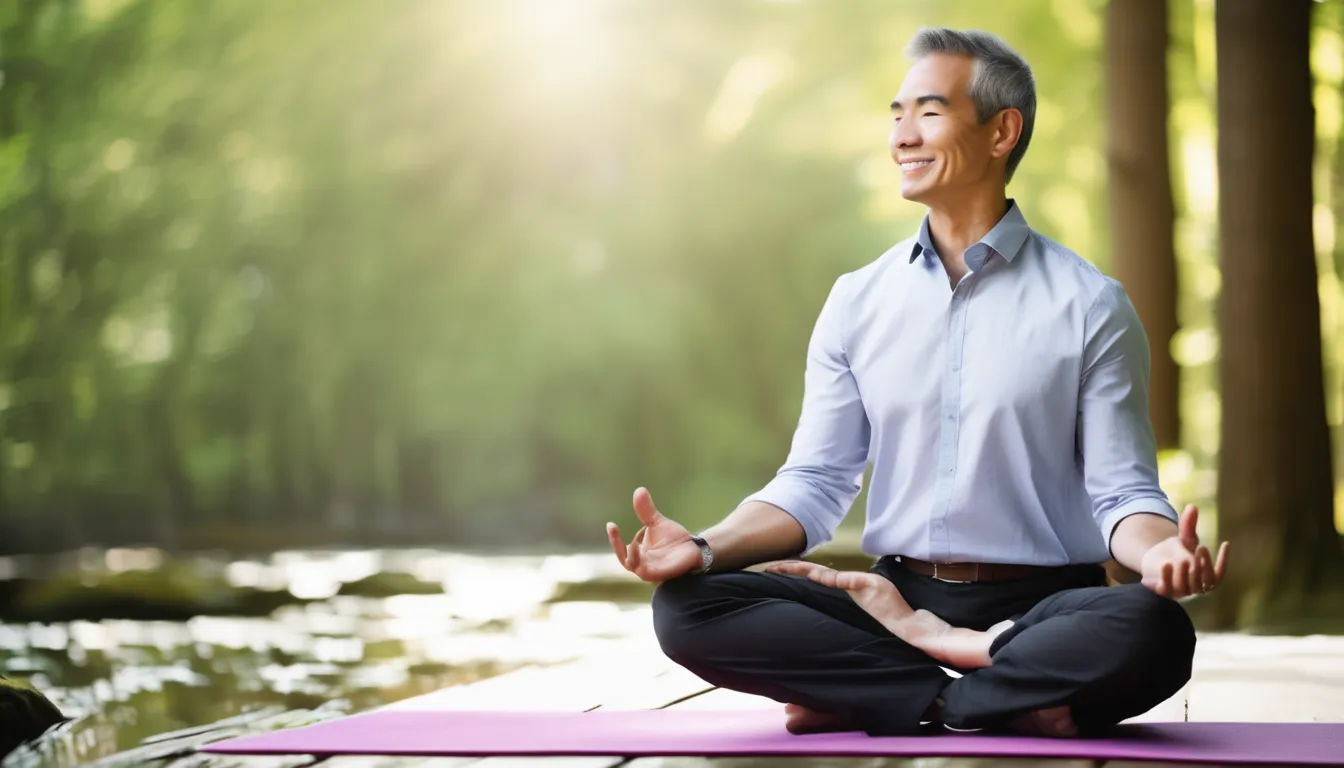You might often find yourself overwhelmed by daily stressors, wondering how to reclaim your peace of mind. Transformative meditation techniques can guide you from this chaos to a place of serenity, but it’s not just about sitting in silence. By exploring methods like mindful breathing and loving-kindness meditation, you can unlock a deeper sense of calm and awareness. What if you could integrate these practices seamlessly into your everyday life? The journey toward tranquility might be closer than you think.
Understanding Meditation Basics
Understanding meditation basics can transform your approach to mindfulness and relaxation. When you grasp the core principles of meditation, you’ll find it easier to incorporate this practice into your daily routine. At its essence, meditation involves focusing your mind and eliminating distractions, allowing you to cultivate awareness and inner peace.
You don’t need any special equipment or a secluded space to start. Just find a quiet spot where you can sit comfortably. Begin by closing your eyes and taking deep breaths, letting your body relax. Focus on your breath, noticing how it flows in and out. If your mind wanders, gently bring your attention back to your breath. This simple practice helps you develop concentration and self-awareness.
You might also explore different forms of meditation, such as guided or mantra meditation, to see what resonates with you. Remember, meditation isn’t about reaching a specific state of mind; it’s about the journey of becoming present.
Mindfulness Meditation Techniques
Mindfulness meditation techniques offer a practical way to cultivate awareness and stay present in your daily life. One effective method is the body scan.
Find a comfortable position, close your eyes, and direct your attention to each part of your body, starting from your toes and moving up to the crown of your head. Notice any sensations without judgment.
Another technique is mindful breathing. Focus on your breath as it flows in and out. If your mind starts to wander, gently bring your attention back to your breath.
You can also practice mindful walking. As you walk, pay attention to the sensation of your feet touching the ground and the rhythm of your steps.
You might also find it helpful to incorporate mindfulness into daily activities. Whether you’re eating, washing dishes, or brushing your teeth, try to fully engage in the experience.
Notice the textures, smells, and sounds around you.
These mindfulness techniques can help you develop a deeper connection with the present moment, reducing stress and enhancing your overall well-being.
Guided Visualization Practices
Guided visualization practices can transform your meditation experience by immersing you in vivid imagery and peaceful scenarios. This technique allows you to create a mental escape, helping reduce stress and promote relaxation. You can visualize serene landscapes, calming colors, or joyful memories, aligning your mind and body with tranquility.
To help you get started, here’s a simple table outlining key aspects of guided visualization:
| Element | Description | Benefits |
|---|---|---|
| Focus | Choose a specific scene or theme | Enhances concentration |
| Relaxation Techniques | Incorporate deep breathing and relaxation | Reduces anxiety |
| Duration | Aim for 5-20 minutes per session | Builds a consistent practice |
| Environment | Find a quiet, comfortable space | Minimizes distractions |
| Frequency | Practice daily or weekly | Promotes long-term benefits |
Loving-Kindness Meditation
Cultivating compassion through Loving-Kindness Meditation can profoundly enhance your emotional well-being. This practice invites you to generate warm-hearted feelings towards yourself and others, helping you break down barriers of negativity and resentment.
Start by finding a comfortable position, closing your eyes, and taking a few deep breaths to center yourself.
Begin with self-compassion. Silently repeat phrases like, “May I be happy, may I be healthy, may I be safe, may I live with ease.” As you soak in these affirmations, notice how they resonate within you.
Next, extend these wishes to loved ones, acquaintances, and even those you find challenging. Imagine sending them love and kindness, creating a ripple effect of compassion.
As you practice, you’ll likely notice an increase in empathy and connection with others. This meditation is a powerful tool to combat feelings of isolation and anger.
Regularly engaging in Loving-Kindness Meditation can reshape your emotional landscape, allowing you to respond to life’s challenges with greater ease and a sense of peace.
Incorporating Meditation Into Daily Life
Integrating meditation into your daily routine can transform how you approach each day. By carving out time online meditation courses meditation, even just a few minutes, you’re setting a positive tone for everything that follows.
Here are some practical ways to weave meditation into your life:
- Morning Ritual: Start your day with a short meditation. It’ll help center your thoughts before diving into daily tasks.
- Mindful Breaks: Take a few moments during your lunch break to step away and meditate. This can recharge your energy and increase your focus for the afternoon.
- Evening Wind-Down: End your day with a calming meditation. Reflect on your day and let go of any stress before bedtime.
- Walking Meditations: If you can’t sit still, try meditating while walking. Focus on your breath and the sensations in your body as you move.
Conclusion
By embracing these transformative meditation techniques, you can shift from stress to serenity. Whether it’s through mindful breathing, guided visualization, or loving-kindness meditation, each practice offers a unique way to cultivate inner peace. Incorporating these techniques into your daily routine can significantly enhance your well-being. Remember, it’s about consistency and patience. As you make meditation a regular part of your life, you’ll find a profound sense of calm and clarity waiting for you.





